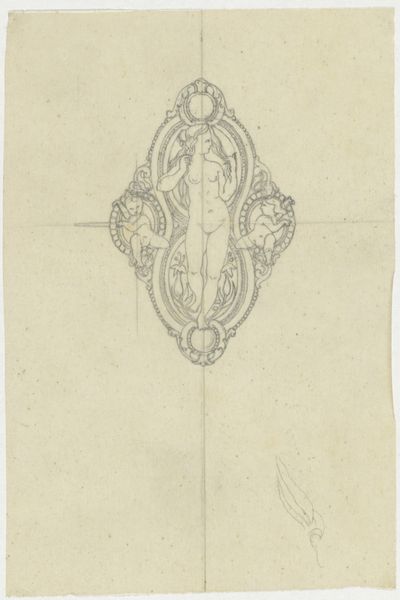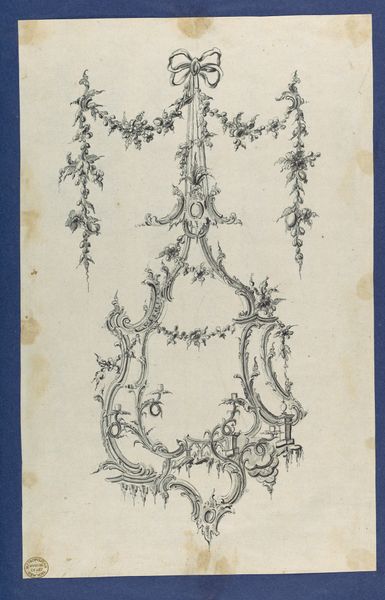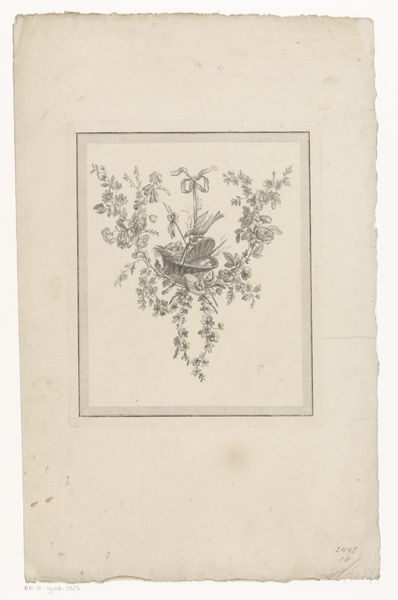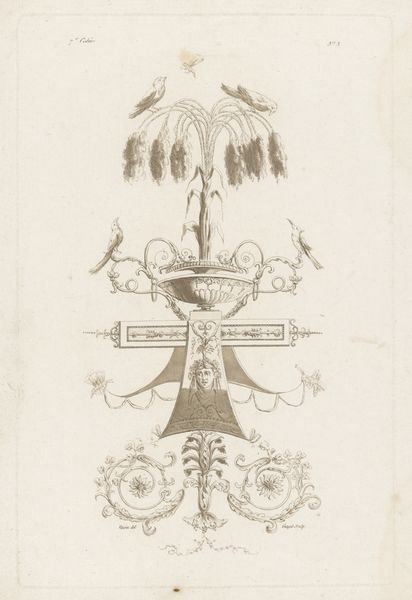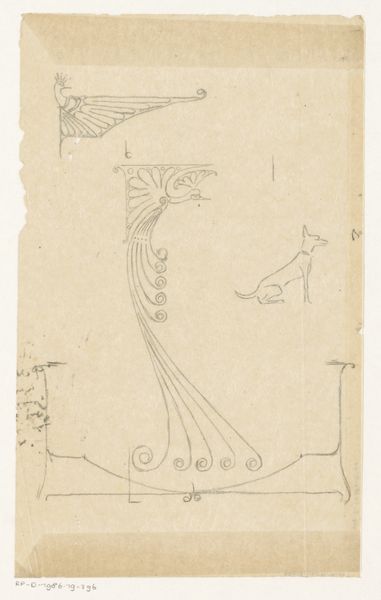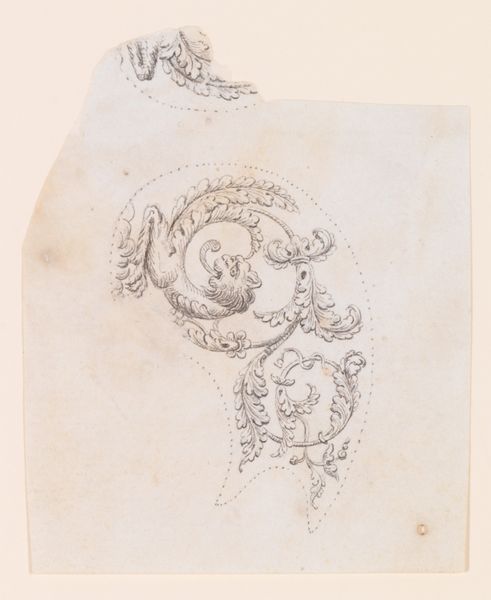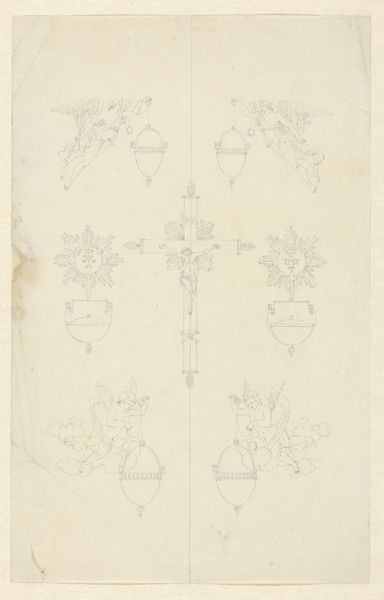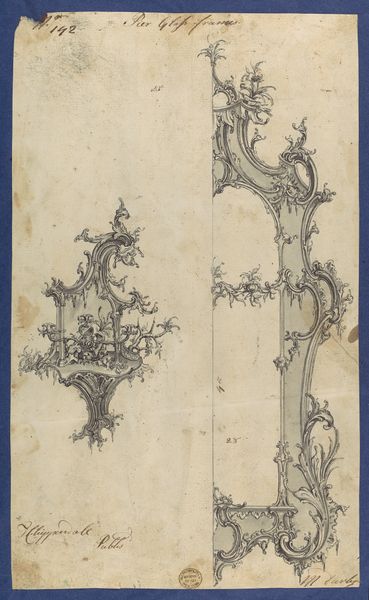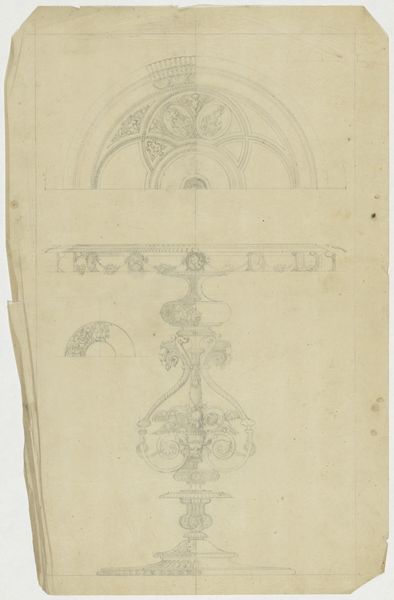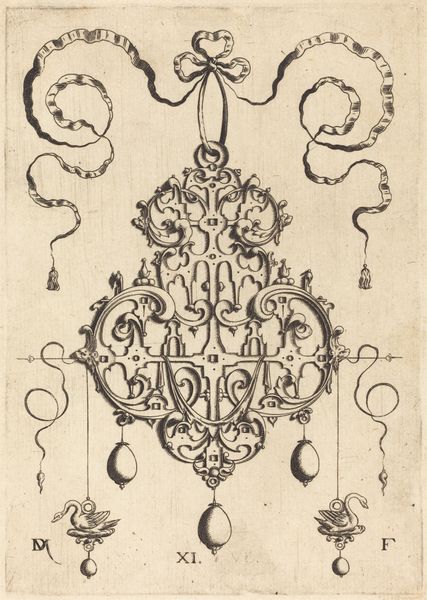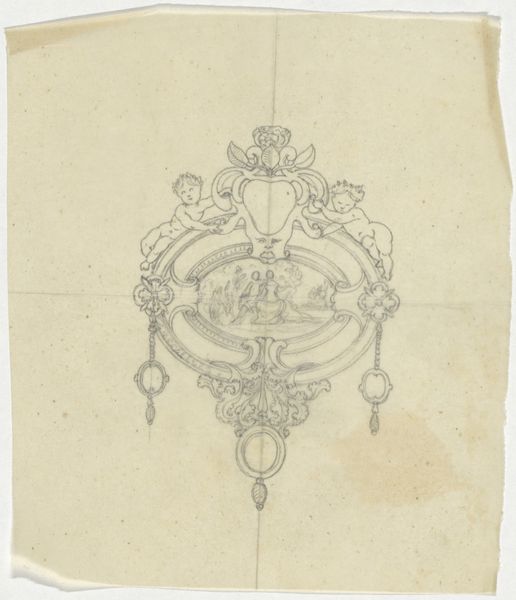
Design for Architectural Ornament; verso: Two Designs for Architectural Ornament 18th century
0:00
0:00
Dimensions: sheet: 4 13/16 x 7 5/16 in. (12.3 x 18.5 cm) irregular
Copyright: Public Domain
Curator: What strikes me first about this sketch is its airy elegance. Editor: Agreed. It's remarkably delicate, like a phantom structure on aged parchment. We are looking at a drawing entitled "Design for Architectural Ornament," and on the verso, two more designs. Attributed to an anonymous artist, this pencil drawing on paper dates to the 18th century, placing it squarely in the Neoclassical period. Curator: Yes, the precision of those geometric forms, even in a sketch, reflects Neoclassical ideals of order and reason. What do you make of the imagery itself? These open-air structures... Editor: They evoke a feeling of classical temples or pavilions, yet there’s an undeniable playfulness. The finials and flourishes soften the strict geometry. The motifs on the bottom structure remind me of fleur-de-lis, a stylized lily that serves as the emblem of France, loaded with history and associations with nobility, and refinement. Curator: That connection to the fleur-de-lis opens some questions. Was this artist French, or working for a French patron? Architectural ornament was a powerful tool for conveying status, ideology, and aspiration, especially during a period of revolution. The rise and fall of design and how design carries symbolic baggage throughout various historical period remains a crucial insight. Editor: It's fascinating how a simple sketch can suggest so much. Even incomplete, we perceive an assertion of power. A structure intended not merely for shelter, but for visual declaration. There is definitely a desire to conjure status or power. The design language is clear and effective. Curator: Indeed. This drawing shows that architectural ornament serves more than aesthetic functions. Its imagery engages a much wider context of society, influence, and public imagination. Editor: It is wonderful to imagine this design manifested on a building and seeing how social values from that period reflect into a tangible artform. Curator: A remarkable visual and cultural statement captured on a single sheet of paper.
Comments
No comments
Be the first to comment and join the conversation on the ultimate creative platform.
